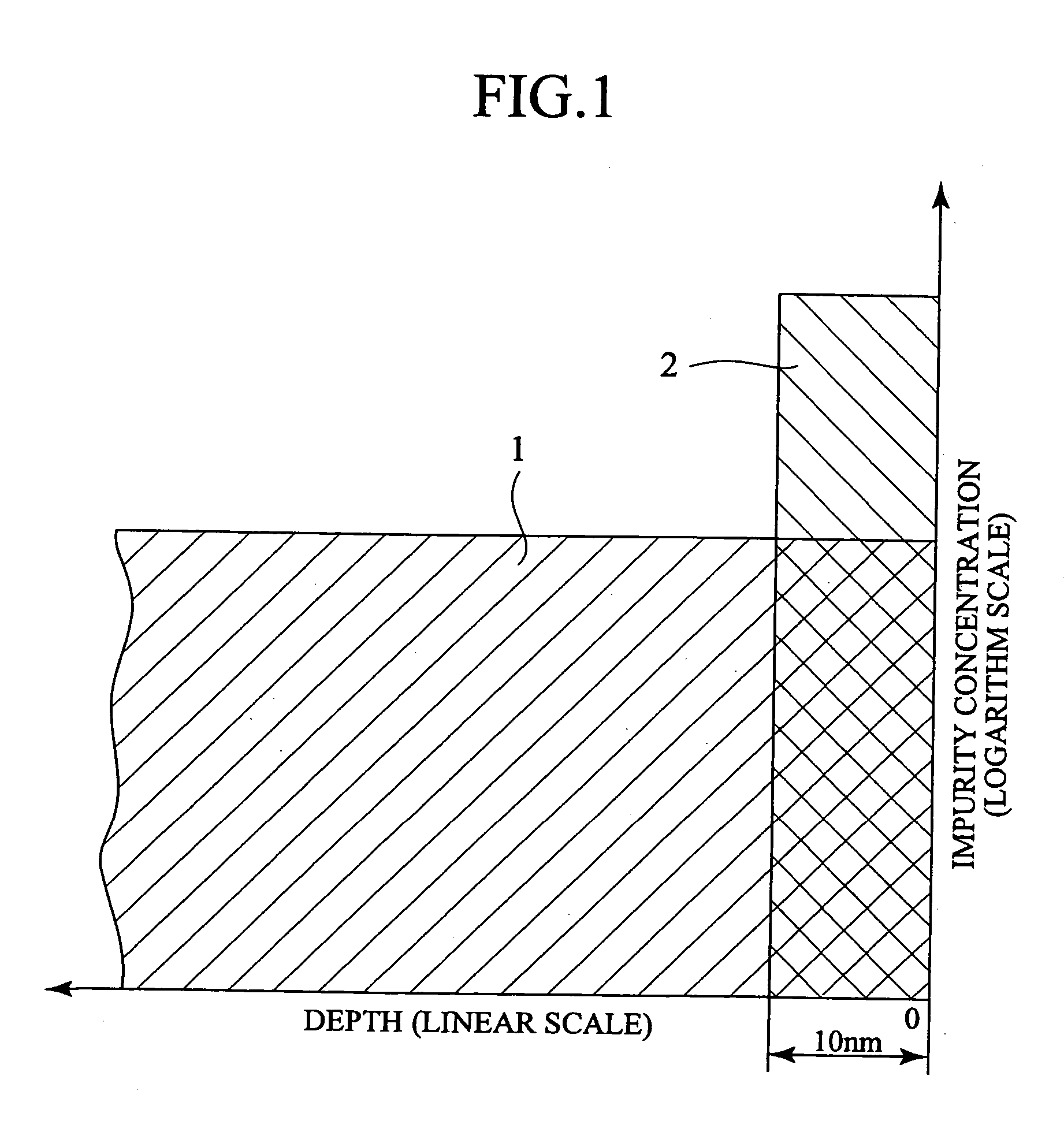Low threshold voltage semiconductor device
a low-threshold voltage, semiconductor technology, applied in the direction of semiconductor devices, electrical appliances, transistors, etc., can solve the problems of deteriorating transistor characteristics, difficult to form such a shallow, high-impurity concentration, counter-doping layer, etc., to achieve smooth distribution, reduce heat treatment, and steep impurity concentration profile
- Summary
- Abstract
- Description
- Claims
- Application Information
AI Technical Summary
Benefits of technology
Problems solved by technology
Method used
Image
Examples
embodiment 1
[0137]FIG. 19 shows impurity concentration profiles in a depth direction of a MIS transistor according to the embodiment 1 of the present invention. The profiles of FIG. 19 are based on the profiles of FIG. 9B and are realizable through ion implantation and thermal diffusion. The profiles of FIG. 19 are based on carrier (hole) concentrations provided by device simulations with a gate voltage of Vth. An abscissa represents depths from an interface between the surface of a substrate and a gate insulating film into the inner part of the substrate, and an ordinate represents impurity concentrations. Continuous-line curves indicate net impurity concentration profiles. A curve with black squares indicates a counter (n-type) impurity concentration profile. A curve with white squares indicates a channel (p-type) impurity concentration profile. A dash-line curve indicates a carrier (hole) concentration profile with a drain electrode receiving 1 V and a gate voltage being Vth. Each impurity c...
embodiment 2
[0150]FIG. 22 shows impurity concentration profiles in a depth direction of a MIS transistor according to the embodiment 2 of the present invention. The profiles of FIG. 22 are based on the stepped profile of FIG. 7A and are realizable through ion implantation and thermal diffusion. The profiles of FIG. 22 are based on carrier (hole) concentrations provided by device simulations with a gate voltage of Vth. An abscissa, an ordinate, a continuous-line curve, a curve with black squares, a curve with white squares, and a dash-line curve have the same meanings as those of FIG. 19. Like the embodiment 1, the embodiment 2 employs a channel impurity concentration profile that steeply declines toward a substrate surface 23 and a counter impurity concentration profile that is low at a pn junction, to suppress the short channel effect. Unlike the embodiment 1, the embodiment 2 makes a counter impurity concentration gradient gentler than a channel impurity concentration gradient at an intersect...
embodiment 3
[0166]FIG. 24 shows impurity concentration profiles in a depth direction of a MIS transistor according to the embodiment 3 of the present invention. The profiles of FIG. 24 are based on the stepped profile of FIGS. 9A and 9B and are realizable with ion implantation and thermal diffusion. The profiles of FIG. 24 are based on carrier (bole) concentrations provided by device simulations with a gate voltage of Vth and a drain electrode voltage of 1 V. The meanings of an abscissa, an ordinate, a continuous-line curve, a curve with black squares, a curve with white squares, and a dash-line curve are the same as those of FIG. 19. The embodiment 3 employs a channel impurity concentration profile that steeply decreases toward a substrate surface 23 and a counter impurity concentration profile that is low at a pn junction, to suppress the short channel effect. Unlike the embodiments 1 and 2, the embodiment 3 forms a peak counter impurity concentration at the substrate surface 23. The embodime...
PUM
 Login to View More
Login to View More Abstract
Description
Claims
Application Information
 Login to View More
Login to View More - R&D
- Intellectual Property
- Life Sciences
- Materials
- Tech Scout
- Unparalleled Data Quality
- Higher Quality Content
- 60% Fewer Hallucinations
Browse by: Latest US Patents, China's latest patents, Technical Efficacy Thesaurus, Application Domain, Technology Topic, Popular Technical Reports.
© 2025 PatSnap. All rights reserved.Legal|Privacy policy|Modern Slavery Act Transparency Statement|Sitemap|About US| Contact US: help@patsnap.com



